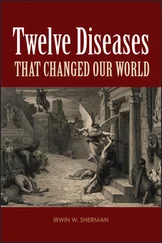According to this hypothesis, plague was carried over long distances by people in their clothing and in the wool and other goods they transported. It was caravans passing through Asian plague foci that were responsible for transporting plague between Asia and Europe; camels are known to become infected relatively easy from infected fleas in plague foci and can transmit the disease to humans. After a plague infection established itself in a caravan (in its animals, in the traders or in in fleas in its cargo) the disease could have spread to other caravans during the time when goods and animals were redistributed and transported across Eurasian trade routes.
This hypothesis, the authors claim, unlike the rat model, can account for the rapid spread of plague epidemics and also explains why all members of one household in a town might have become plague victims while neighboring households escaped. The maritime import of plague is most evident during the second pandemic in the isolation of ships before unloading their cargo, and the black rat may have played a role in maintaining plague outbreaks on ships as well as importing plague into harbors, but its role as a potential plague reservoir in Europe can be questioned.
DNA sequences obtained from skeletons in Germany spanning the 14th to 17th centuries suggest that plague outbreaks in Europe did not arrive from the East but rather that a virulent strain of Y. pestis remained (or was reimported) for several centuries in Europe, while over time it worked its way back to Asia, causing outbreaks and killing millions in 19th-century China, including the one that reappeared in 1994 in epidemic form in countries including Malawi, Mozambique, and India, and that afflicts Madagascar today.
At present, most human cases of the plague are of the bubonic form, which results from the bite of a flea, usually a flea that previously fed on an infected rodent. The bacteria spread to the lymph nodes (armpits and neck but frequently the area of the groin), which drain the site of the bite, and these swollen and tender lymph nodes give the classic sign of bubonic plague, the bubo. Three days after the buboes appear, a high fever develops, the individual becomes delirious, and hemorrhages in the skin result in black splotches. Some contend that these dark spots on the skin gave the disease the name Black Death, whereas others believe “black” is simply a mistranslation of pestis atra , meaning not “black” but rather a “terrible” or “deadly” disease.
The buboes continue to enlarge, sometimes reaching the size of a hen’s egg, and when these buboes burst, there is agonizing pain. Death can come 2 to 4 days after the onset of symptoms. In some cases, however, the bacteria enter the bloodstream. This second form of the disease, which may occur without the development of buboes, is called septicemic plague. Septicemic plague is characterized by fever, chills, headache, malaise, massive hemorrhaging, and death. Septicemic plague has a higher mortality than does bubonic plague. In still other instances, the bacteria move via the bloodstream to the alveolar spaces of the lungs, leading to a suppurating pneumonia or pneumonic plague. Pneumonic plague is the most feared form of the disease and is the only form of the disease that allows for human-to-human transmission. It is characterized by watery and sometimes bloody sputum containing live bacteria. Coughing and spitting produce airborne droplets laden with the highly infectious bacteria, and by inhalation others may become infected. Pneumonic plague is the rapidly fatal form of the disease, with a fatality rate of 100% and death occurring within 24 h of exposure.
Some have suggested that the nursery rhyme “Ring around the Rosie” refers to bubonic plague in 17th-century England.
Ring around the rosie,
A pocket full of posies,
Achoo! Achoo!
We all fall down.
The rosies are the pink body rash, posies the perfumed bunches of flowers used to ward off the stench of death, “achoo” is the coughing and sneezing, and death is signified by “we all fall down.” The first time this rhyme was suggested to be plague related was in 1961, however, and because there is no evidence of a version prior to 1881, it is unlikely that the rhyme actually relates to the plague.
Y. pestis is one of the most pathogenic bacteria: the lethal dose that will kill 50% of exposed mice is a single bacterium that is injected intravenously. Typically, Y. pestis is spread from rodent to rodent by fleas, but it can also survive for a few days in a decaying corpse and may persist in a frozen body.
The reasons for the high degree of pathogenicity of Y. pestis remain unclear, however, though some virulence factors have been identified. The genes of Y. pestis are located on one chromosome and a virulence plasmid (a circular DNA molecule). Located on this plasmid are a set of genes that are activated by body temperature and millimolar concentrations of calcium, conditions found in the mammalian host. These genes code for the T3SS (type III secretion system), containing an “injectosome,” a hypodermic-like structure, and a translocon that forms a pore across the host cell membrane. The T3SS functions to inject multiple toxic proteins, named Yops (Yersinia outer proteins), directly into the host cell cytoplasm. Once inside the cell, the Yops trigger a preprogrammed chain reaction that results in cell death. Yops also inhibit phagocytosis by macrophages and block cytokine function (see p. 97). Together this prevents the bacterium from being ingested, thereby avoiding the immune mechanisms of the host; another protein is able to degrade fibrin, a material found in the blood clot, allowing the Yersinia to move throughout the body by allowing it to escape from the clot at the site of the flea bite.
While the above description refers to the disease in humans, the disease in fleas also has a distinctive pattern. Small mammals such as urban and sylvatic (or wood) rats, as well as squirrels, prairie dogs, rabbits, voles, coyotes, and domestic cats, are the principal hosts for Y. pestis . More than 80 different species of fleas are involved as plague vectors. Fleas are blood-sucking insects ( Fig. 4.7), and when a flea bites a plague-infected host (at the bacteremic/septicemic stage), it ingests the rod-shaped bacteria; these multiply in the blood clot in the proventriculus (foregut) of the flea. This bacteria-laden clot obstructs the flea’s bloodsucking apparatus, and as a consequence the flea is unable to pump blood into the midgut, where it would be digested. As a result, the flea becomes hungrier, and in this ravenous state the flea bites the host repeatedly; with each bite it regurgitates plague bacteria into the wound. In this way infection is initiated. Y. pestis can also be pathogenic for the flea, and fleas with their foregut blocked rapidly starve to death. If the mammalian host dies, its body cools down, and the fleas respond by moving off the host to seek another live warm-blooded host. If there is an extensive die-off of rodents, however, then the fleas move on to less preferred hosts such as humans, and so an epidemic may begin.
The Plague-Causing Bacterium, Yersinia pestis
Y. pestis has been subdivided into three varieties—Antiqua, Medievalis, and Orientalis. Epidemiological and historical records support the hypothesis that Antiqua, presently resident in Africa, is descended from bacteria that caused the first pandemic, whereas Medievalis, resident in central Asia, is descended from bacilli that caused the second pandemic; those of the third pandemic, and currently widespread, are all Orientalis. It is believed that Y. pestis probably evolved during the last 1,500 to 20,000 years because of changes in social and economic factors that were themselves the result of a dramatic increase in the size of the human population, which was coincident with the development of agriculture. This triggered the evolution of virulent Y. pestis from the enteric, food-borne, avirulent pathogen Y. pseudotuberculosis . This required several genetic changes: a gene whose product is involved in the storage of hemin resulted in blockage of the flea proventriculus and enhanced flea-mediated transmission, and other gene products (phospholipase D and plasminogen activator) facilitated blood dissemination in the mammalian body and allowed for the infection of a variety of hosts by fleas.
Читать дальше












